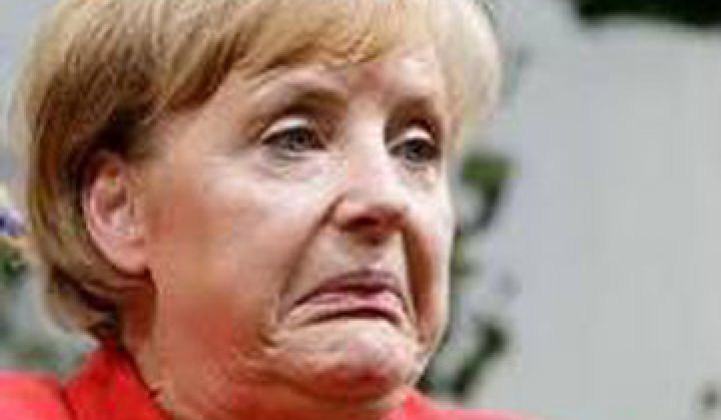Germany regularly cuts its feed-in tariffs for renewable energy. The cuts cause anxiety in the solar world, but generally don't lead to a panic because of the measured, reasonable actions taken by the government and the fact that demand continues to grow in other parts of the world.
Think of it: solar is expected to grow 50 percent a year in the U.S. between 2008 and 2012. Utility-scale capacity in the U.S. sits at under 250 megawatts today: current contracts could boost it to 5 gigawatts in five years. Only Farmville grows faster.
Norbert Roettgen, Germany's current environmental minister, said this week, however, that more cuts to Germany's feed-in tariff are slated for 2011. And when pressed about whether he could guarantee that the subsidies would continue in 2012, he gave a flat-out "no."
"We're in talks with the [solar power] sector to come to a reasonable further development," Roettgen said, according to Reuters. "We should be able to come to a reasonable further development."
"Those who want renewable energy should keep in mind that there is a need for society's acceptance of it," he added.
It makes a great negotiating stance, but getting rid of the renewable tariffs or drastically accelerating their reduction might not play so well during elections. Take a look at this report from Germany's Federal Ministry of Environment that was published in March.
Approximately 17.67 billion euros were invested in renewable energy in the country in 2009. The turnover, or revenue, from German-based renewable energy manufacturers came to 16.1 billion euros: 40 percent of that total came from the wind industry and 34.7 percent came from solar. Some estimates predict that renewable employment will come to 500,000 by 2020 or earlier.
In 2009, approximately 294,000 people were employed in renewable energy with 87,000 of the total coming from wind; 64,600 were employed in solar. The figures do not include the farmers who've dedicated acres of corn and wheat to solar. Indirectly, trucking and construction firms benefit from solar.
Coal mining employs about 47,000 in Germany, according to this study. A potential growth industry exists for clean coal technologies -- Germany remains one of the centers of research and activity in this field -- but carbon capture requires subsides like wind and solar.
German voters sent a message of frustration to Chancellor Angela Merkel in the last election. In some states, the center-left coalitions almost did as well as Merkel's.
Like other countries, Germany has to worry about its debt -- but history shows that employment tends to rule at the polls.



